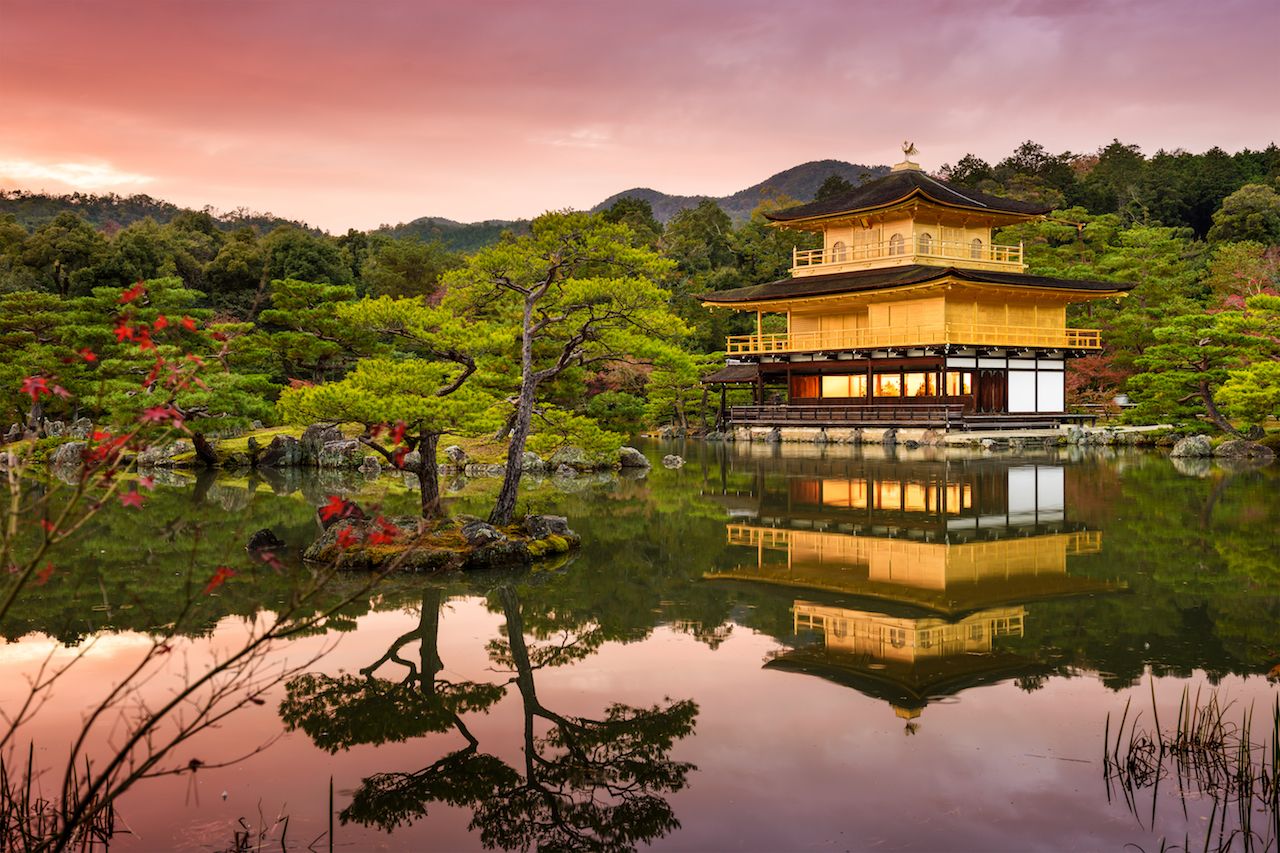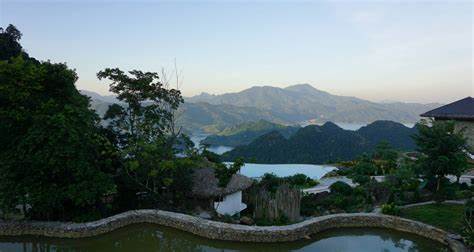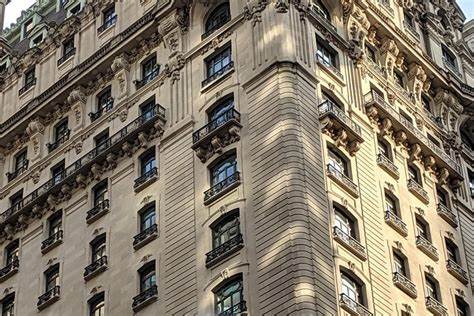Kyoto, Japan’s ancient capital, is a city that transports visitors to another time, offering a stunning array of historical landmarks, traditional culture, and serene natural beauty. Known for its countless temples, shrines, and gardens, Kyoto is a place where history and spirituality intertwine, creating an atmosphere of tranquility and reverence. Whether you’re marveling at intricate Japanese gardens, visiting iconic Shinto shrines, or enjoying the beauty of the changing seasons, Kyoto is a city that enchants with its timeless appeal.
Begin your exploration of Kyoto at the Kinkaku-ji (Golden Pavilion), one of the most iconic landmarks in Japan. The temple, covered in gold leaf, reflects beautifully in the pond that surrounds it, creating a stunning visual spectacle. The Zen Buddhist temple and its tranquil garden provide a peaceful atmosphere for meditation and reflection. Kinkaku-ji is particularly breathtaking during the autumn, when the surrounding maple trees turn brilliant shades of red and orange.
Not far from Kinkaku-ji is the Ryoan-ji, famous for its minimalist Zen rock garden, which is considered one of the greatest examples of Japanese garden design. The simplicity of the garden, with its carefully placed rocks and raked gravel, invites contemplation and quietude. Ryoan-ji is a perfect spot for those looking to connect with the calming principles of Zen Buddhism.
Another must-see temple is the Kiyomizu-dera, perched on a hillside overlooking the city. This historic UNESCO World Heritage site is renowned for its massive wooden stage that juts out over the hillside, offering panoramic views of Kyoto’s skyline and the surrounding nature. The temple is dedicated to Kannon, the goddess of mercy, and is particularly magical during the spring when cherry blossoms surround it, creating a beautiful contrast of pink against the temple’s wooden structure.
The nearby Higashiyama District is a charming area to explore on foot, with its cobblestone streets, traditional tea houses, and quaint shops selling handcrafted goods. As you walk through this historic district, you’ll find yourself surrounded by old wooden buildings, which offer a glimpse into Kyoto’s past. One of the highlights of Higashiyama is Gion, the famous Geisha district. Here, you might catch a glimpse of a geisha or maiko (apprentice geisha) as they make their way to appointments, dressed in their stunning kimono.
Kyoto is also home to many beautiful Shinto shrines, and one of the most iconic is the Fushimi Inari Taisha, dedicated to the god of rice and agriculture. This shrine is famous for its thousands of vibrant red torii gates, which form a mesmerizing path that leads up to the summit of Mount Inari. Walking through these gates, you’ll be immersed in a spiritual journey, surrounded by the natural beauty of the forest and the sense of reverence that permeates the space.
For those interested in Kyoto’s gardens, a visit to Nijo Castle is a must. This UNESCO World Heritage site features exquisite Japanese gardens and the famous “nightingale floors,” which chirp when walked upon, designed to warn against intruders. The castle itself is a beautiful example of Japanese feudal architecture, with ornate interiors and beautifully painted sliding doors depicting scenes from the Japanese countryside.
Kyoto’s gardens are some of the most serene in the world, and one of the most tranquil is the Imperial Palace Park, home to the former Imperial Palace of Japan. The park is perfect for leisurely walks among ponds, bamboo groves, and lush greenery. Another lovely garden is the Shosei-en Garden, located near Kyoto Station, offering peaceful views of ponds and traditional tea houses.
No visit to Kyoto is complete without experiencing its incredible seasonal beauty. Spring brings the city’s famous cherry blossoms (sakura), transforming Kyoto into a breathtaking spectacle of pink and white blooms. The most famous cherry blossom spot is the Philosopher’s Path, a scenic walk along the canal lined with hundreds of cherry trees. During autumn, the city is equally stunning, as the Japanese maples and ginkgo trees turn brilliant shades of red, orange, and yellow. Popular spots to witness this beauty include the Eikando Temple and Togetsukyo Bridge in Arashiyama, where the colorful foliage creates a stunning contrast with the traditional architecture.
For a taste of Kyoto’s traditional tea culture, be sure to visit one of its many tea houses and experience a Japanese tea ceremony. The tea ceremony, known as chanoyu, is an art form that emphasizes the aesthetic appreciation of tea preparation. The city’s Uji area, located just outside Kyoto, is famous for producing some of the finest green tea in Japan, and visitors can learn about tea cultivation and taste different varieties of matcha (powdered green tea).
Kyoto is also a city where you can savor exceptional traditional Japanese cuisine. The city’s culinary scene is famous for its kaiseki (multi-course Japanese haute cuisine), which emphasizes seasonal ingredients and artistic presentation. For a truly unique experience, dine at a ryokan (traditional Japanese inn), where you can enjoy a meal served in your room, often prepared by the inn’s chefs. The city is also known for its yudofu (tofu hot pot), a dish that originated in Kyoto and is perfect for a light, healthy meal.
If you’re a fan of shopping, Kyoto offers a variety of local crafts, from kimonos and ceramics to traditional fans and paper lanterns. The Nishiki Market, often referred to as Kyoto’s “kitchen,” is a bustling market where you can find local delicacies, pickles, sweets, and other Japanese culinary treats. Don’t forget to try Kyoto’s famous matcha-flavored sweets, such as matcha ice cream, mochi, and matcha-flavored chocolates.
One of Kyoto’s most peaceful retreats is Arashiyama, a scenic district located on the outskirts of the city. Arashiyama is famous for its bamboo grove, where you can wander through towering bamboo stalks, creating an ethereal and calming atmosphere. The Togetsukyo Bridge, which spans the Katsura River, is a popular spot to view the surrounding mountains, particularly during autumn when the foliage is at its peak.
Kyoto is a city that invites you to slow down, take in its beauty, and immerse yourself in a rich cultural experience. Its temples, gardens, and historic districts provide a glimpse into Japan’s past, while its tranquil settings offer moments of peace and reflection. Whether you’re visiting for its natural beauty, historical landmarks, or traditional experiences, Kyoto is a destination that will leave you with lasting memories of serenity, culture, and timeless elegance.
This guide captures the essence of Kyoto, a city of spiritual serenity, stunning natural beauty, and deep cultural roots. It is the perfect destination for those seeking to experience the heart of traditional Japan.





